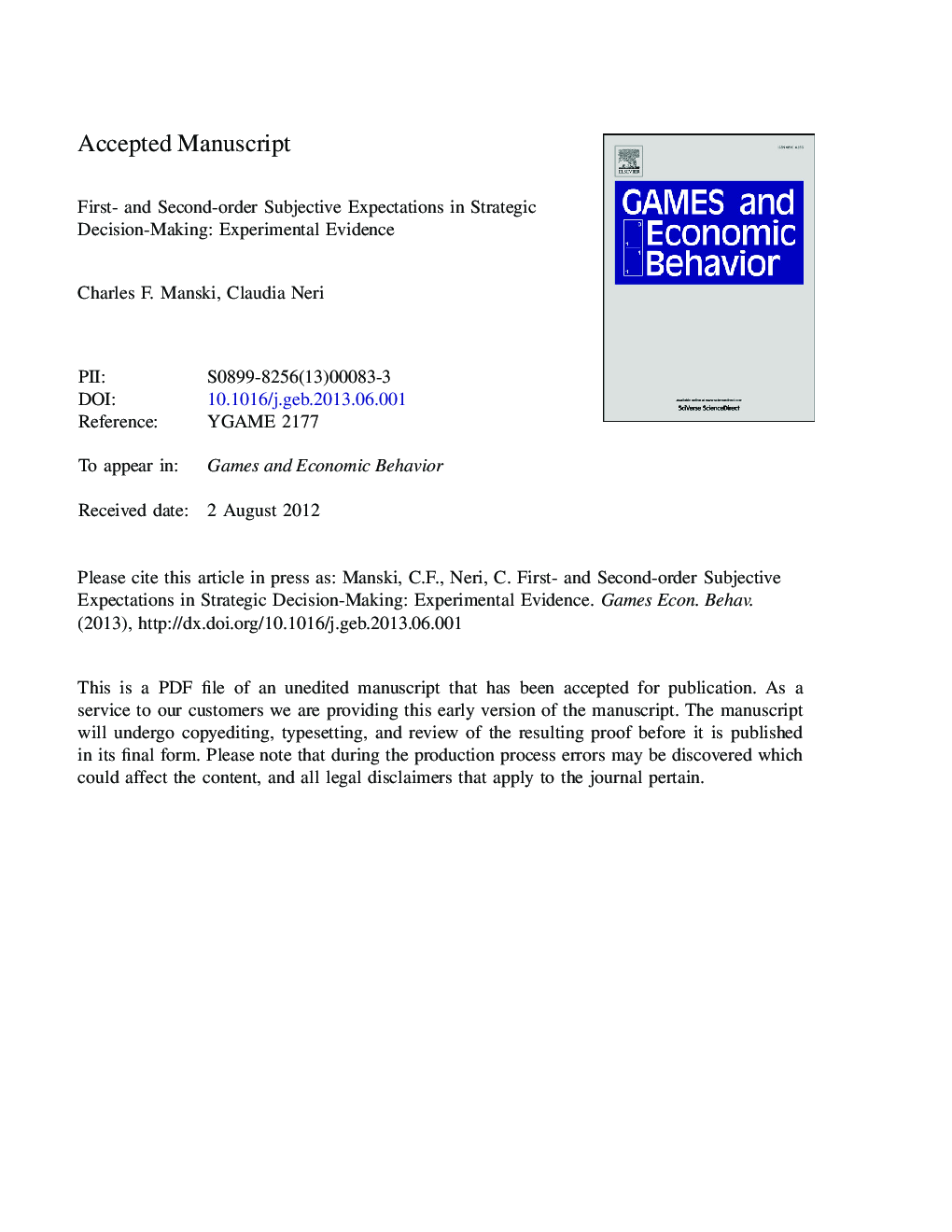| Article ID | Journal | Published Year | Pages | File Type |
|---|---|---|---|---|
| 5071948 | Games and Economic Behavior | 2013 | 39 Pages |
Abstract
We study first- and second-order subjective expectations (beliefs) in strategic decision-making. We elicit probabilistically both first- and second-order beliefs and apply the method to a Hide-and-Seek experiment. We study the relationship between choice and beliefs in terms of whether observed choice coincides with the optimal action given elicited beliefs. We study the relationship between first- and second-order beliefs under a coherence criterion. Weak coherence requires that if an event is assigned, according to first-order beliefs, a probability higher/lower/equal to the one assigned to another event, then the same holds according to second-order beliefs. Strong coherence requires the probability assigned according to first- and second-order beliefs to coincide. Evidence of heterogeneity across participants is reported. Verbal comments collected at the end of the experiment shed light on how subjects think and decide in a complex environment that is strategic, dynamic and populated by potentially heterogeneous individuals.
Related Topics
Social Sciences and Humanities
Economics, Econometrics and Finance
Economics and Econometrics
Authors
Charles F. Manski, Claudia Neri,
